Romance fiction has one of the most recognisable brands in book culture. It is known for a handful of attributes: its happy-ever-after endings, the pocket Mills & Boon and Harlequin editions, the covers featuring Fabio (in the 1990s) or naked male torsos (the hot trend in the 21st century). It is known for being overwhelmingly written and read by women, and for being mass-produced.
But romance fiction is also the most innovative and uncontrollable of all genres. It is the genre least able to be contained by established models of how the publishing industry works, or how readers and writers behave.
Contemporary romance fiction is challenging the prevailing wisdom about how books come into being and find their readers.
For our book Genre Worlds: Popular Fiction and Twenty-First Century Book Culture, coauthored with Lisa Fletcher, we conducted nearly 100 interviews with contemporary authors and publishing professionals. Our research shows that fiction genres are not static. They do not constrain artistic originality, but provide the kind of structure that sparks creativity and passion.
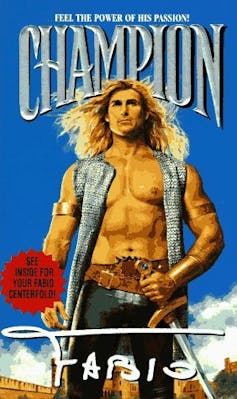
Genre fiction can be understood as having three dimensions. The textual dimension is what happens on the page. The industrial dimension is how the books are produced. And the social dimension is the people who write, read and talk about genre fiction.
These three dimensions interact to create what we have called a “genre world”. Each distinct genre world (such as fantasy or crime) combines textual conventions, social communities and industry expectations in its own way. And romance is the most fast-paced, rapidly changing genre world of them all.
When it comes to genres of articles, we have a soft spot for the listicle. So, here are five things you may not know about contemporary romance fiction – five things that show the dynamism at the heart of book culture.
1. Romance is at the forefront of digital innovation
Twenty-first century publishing has seen fundamental shifts in the way books are produced, distributed and consumed, largely thanks to digital technology.
The romance genre is notable historically for its rapid production and consumption cycle. As a result, it has been well placed to adapt to the widespread uptake of digital publishing, which also moves rapidly. Romance writers and publishers are entrepreneurial and comfortable taking risks. The moment constraints are released, romance writers rush in.
This is exactly what has happened with self-publishing. Since the advent of Kindle Direct Publishing in 2007, hundreds of thousands of romance books have been self-published there. Other opportunities have blossomed on sites such as Wattpad or through print-on-demand services such as IngramSpark. In Australia, for example, there was a 1,000% increase in the number of self-published romance novels between 2010 and 2016.
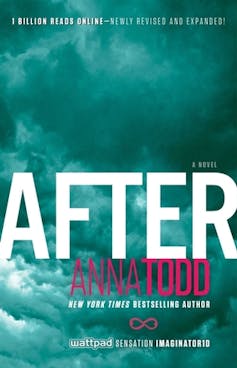
Some self-published romance novels have achieved mind-boggling success. Anna Todd’s 2014 romance novel After, originally fan fiction based on the band One Direction, drew more than 1.5 billion reads on Wattpad. It was subsequently acquired by Simon & Schuster and has spawned a movie series.
In other cases, romance authors have formed co-ops to publish work together. Tule Publishing is a small, largely digital publisher with a limited print-on-demand service that produces multi-author continuity series as part of its publishing model. The Tule authors we interviewed spoke of their strong community and creative connections.
The self-publishing of genre fiction has blurred the lines between author, agent, editor, cover designer, typesetter, publisher and bookseller.
Stephanie Laurens, one of the world’s most successful romance novelists, began writing with Mills & Boon before moving to HarperCollins. In 2012, she gave a keynote address to the Romance Writers of America convention. She used the opportunity to reflect on industry change. Soon after, she began reconfiguring her own publishing arrangements.
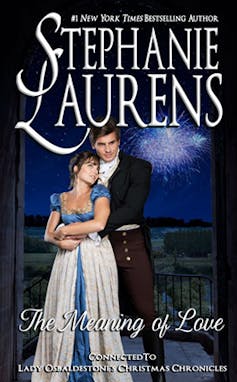
Now Harlequin publishes her print novels, while she self-publishes the e-book versions. She also self-publishes novellas that are prequels to, or that sit between, the novels in her traditionally published series.
Laurens is a prolific author with loyal fans, an author who can afford to take risks. She realises that self-publishing potentially offers her a better deal and has been able to pursue that while retaining ties to a traditional publisher.
Her career complicates any view of self-publishing as second best. Her example has been much emulated among romance writers. Such a career move challenges how we might typically theorise the power relations of literary culture.
Read more: ‘Goodreads’ readers #ReadWomen, and so should university English departments
2. Romance readers are active and engaged
The dynamism of romance fiction is intimately linked with its engaged readers. Unlike other kinds of publishing, where the fate of each book is relatively unpredictable, romance has historically had many loyal readers who subscribe through mail-order systems to receive books regularly – a model that has not worked successfully at scale for any other genre.
In the 21st century, many of these loyal romance readers are online. They tweet about their favourite authors, write Goodreads reviews, and run blogs and podcasts.
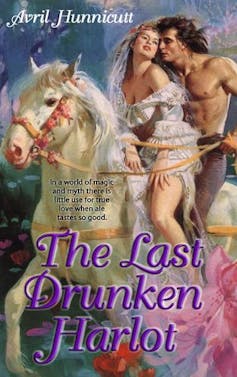
People read romance fiction for different reasons. They might be drawn to its focus on the emotional nuances of relationships, its escape into various times and places (romance subgenres really do cover the gamut), or its gold-plated promise of happy endings and pleasure. They might read casually or intensely, with curiosity, scepticism or devotion.
All of these are active modes; they can’t be reduced to consumerism. There is an element of feeling to the involvement. The shared pleasure and sense of belonging that comes with being in the genre world came up regularly in our interviews.
Author Rachael Johns, speaking of romance fiction, said “this is my passion, I fell in love with the romance genre”. Agent Amy Tannenbaum described the romance community as “tight-knit”. Harlequin marketing specialist Adam Van Roojen suggested the romance community’s supportive nature makes it “so distinctive I think from other genres”.
People say the same thing about other genres, of course, but these claims show how people imagine genre worlds as a kind of community.
Communities have boundaries and can be exclusionary. Kristina Busse has written about the impulse to police borders in fan-fiction communities, and of how ascribing positive values to some members of a community may exclude other people.
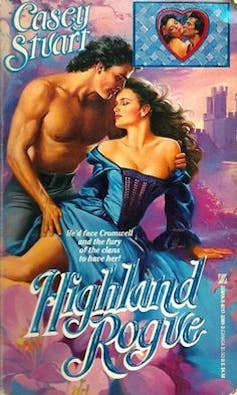
This dynamic is at work in genre worlds, even if it is low-key or not openly acknowledged. What’s more, the inside world of romance fiction has an inside of its own. This is evident in the way readers relate to one another (there is an implicit hierarchy of fans) and in the industrial underpinnings of the genre.
For example, there is a distinction between a writer’s core audience and fringe audience that affects sales formats and international editions. Core romance readers tend to read digitally, and therefore can often access US editions of a book. Casual romance readers are more likely to pick up a print book from a store like Big W or Target and are therefore more likely to be the target audience for local editions.
In general, though, both core and fringe romance readers know how to read romance fiction. They are attuned to the codes that run through the novels. Back in 1992, Jayne Ann Krentz and Linda Barlow argued that certain words and phrases in romance fiction act as a hidden code “opaque to others”.
Committed romance readers have a deep knowledge that makes them experts in their genre. When these readers express their views online, authors and publishers take note.
One recent example involves a tweet from romance fiction author, podcaster and blogger Sarah McLean. She asked her nearly 40,000 Twitter followers to “Tell me the best romance you’ve read in the last week. Bonus points for it being 

 .”
.”
The tweet was directed at the hardcore readers of the romance genre world. It assumed an audience that reads more than one romance novel per week. The 300 or so replies constitute a mega-thread of recommendations.
Romance readers are generous to one another this way, as the sheer abundance of commercially and self-published romance fiction makes it hard to sort and choose. The replies also offer an up-to-the-minute map of the subgenres and tropes to which readers are responding. These include shape-shifters, second-chance love stories, queer romance, and dukes and duchesses (possibly a Bridgerton effect).
Read more: To the mattresses: a defence of romance fiction
3. Romance fiction is global
Far from being circumscribed by small horizons, romance fiction is globally connected and inflected. This is amply demonstrated by the example of Australian romance fiction, which is formed and sustained across international literary markets and creative communities.
Pascale Casanova’s theory of the world republic of letters notes the cultural force of London and New York as anglophone publishing centres. This mitigates against the inclusion of Australian content in popular fiction. Stories set in New York or London seem to have no limits in terms of international portability. But stories set in Australia, or another peripheral market, can be harder to pitch.
Australian writers are conscious of this, as it directly affects the viability of their careers. But export success is possible for Australian work. The subgenre of Australian rural romance or “RuRo” is the best-known example. Authors like Rachel Johns are bestsellers in other territories. Romance novels set in Australia are popular in Germany – the Germans even have a name for them, the “Australien-Roman”.
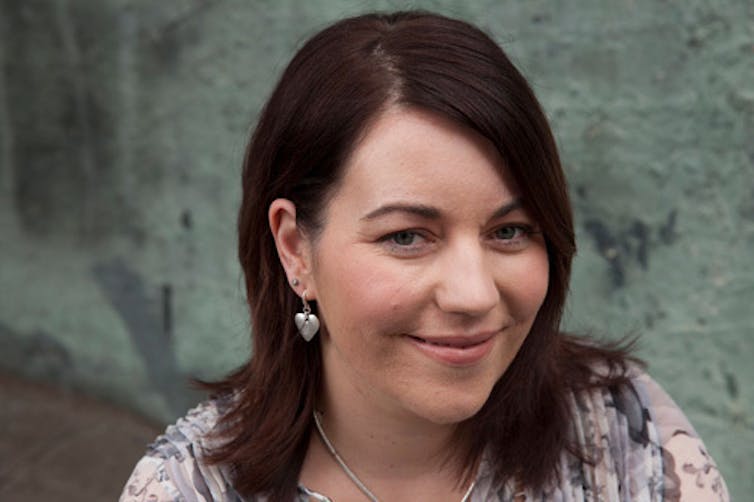
Romance fiction is energised by transnational communities of readers and writers, often mediated online. Australian romance author Kylie Scott, for instance, credits American romance bloggers with driving the popularity of her books, and thanks book bloggers in the acknowledgements of her books.
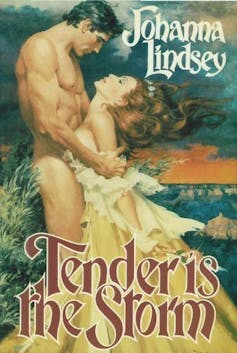
These cultural mediators assist the transnational movement of books in genre worlds. The development of digital-first genre fiction publishers and imprints also supports such movement, not least through promoting global release dates and world rights, so that genre books can be simultaneously accessible to readers worldwide.
But nothing comes close to the romance fiction convention, or “con”, in demonstrating the international cooperative links of the romance community. Cons, such as Romance Writers of America, support romance writers by providing professional development opportunities; they offer structure to participants’ professional lives.
For example, Regency romance writer Anna Campbell has oriented her career towards the United States. Campbell began to professionalise by joining the Romance Writers of Australia, but then entered professional prizes run through US networks, and it was these that gained attention for her writing and enabled her to get an agent. American success followed:
My agent ended up setting up an auction in New York, and three of the big houses wanted to buy it. The auction went for a week, and at the end of Good Friday 2006, I was a published author and they paid me enough money to become a full-time writer.
Campbell went on to write five books with Avon, then moved to Hachette for a number of books. She has now moved to self-publishing. The majority of her readership remains in the US.
Romance’s capacity to reflect the local concerns of writers and readers, coupled with its responsiveness to global industrial processes, makes it one of the most intriguing genres for considering what “Australian books” might look like in the 21st century.
Read more: ‘I believe in romance’: remembering Valerie Parv, the Australian author who sold 34 million books
4. Romance can be socially progressive
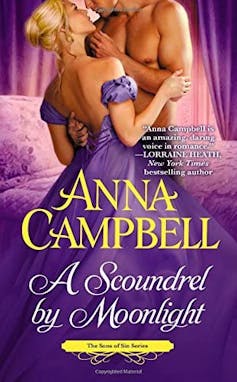
It has been more than 50 years since Germaine Greer, in The Female Eunuch, dismissed romance fiction as women “cherishing the chains of their bondage”. The perception that the genre is conservative persists.
But romance writers and readers are more and more concerned with inequality across gender, race and sexuality. They are pushing back against old conventions.
In 2018, Kate Cuthbert, then managing editor of Harlequin’s Escape imprint, gave a speech that revealed romance’s internal debates. She addressed the responsibilities of romance fiction writers and publishers in the #MeToo era, arguing that
if we want to call ourselves a feminist genre, if we want to hold ourselves up as an example of women being centred, of representing the female gaze, of creating women heroes who not only survive but thrive, then we have to lead.
For Cuthbert, this means “breaking up” with some familiar romance fiction tropes, such as the coercion of women:
many of the behaviors that are now being called out – sexual innuendo, workplace advances, stolen kisses because the kisser couldn’t resist – feel in many ways like an old friend. They exist in the romance bubble […] and they readily tap into that shared emotional history over and over again in a way that feels familiar and safe.
Cuthbert’s compassionate acknowledgement of readers’ and writers’ attachment to established genre norms sits alongside her call for evolution, for renewed attention to “recognising the heroine’s bodily autonomy, her right to decide what happens to it at every point”.
Structural hostility in the publishing industry towards people of colour has also become a cause romance writers and readers rally behind. In 2018, Cole McCade, a queer romance writer with a multiracial background, revealed that his editor at Riptide had written to him:
We don’t mind POC But I will warn you – and you have NO idea how much I hate having to say this – we won’t put them on the cover, because we like the book to, you know, sell :-(.
In the wake of this revelation, multiple authors pulled their books from Riptide, as a further series of revelations about the publisher’s bad behaviour emerged.
The following year, the Romance Writers of America examined the past 18 years of its RITA Awards finalists and published the results: no black author had ever won a RITA, and the percentage of black authors represented on shortlists was less than half a per cent.
In response, the board published a “Commitment to RITAs and Inclusivity”, in which it called the shocking results a “systemic issue” that “needs to be addressed”. In 2020, they announced they were employing diversity and inclusion experts to help diversify their board, train staff, and help “design and structure” more inclusive membership programs and events, including the annual conference.
The Romance Writers of America’s intentions have not always been successful. The ongoing visibility of marginalised groups in the genre continues nonetheless, in part driven by romance’s rapid and robust uptake of digital publishing. Access to publishing platforms has allowed micro-niche genres to proliferate. LGBTQIA+ romance subgenres have become particularly visible: from lesbian military romance to gay alien romance to realist asexual love stories.
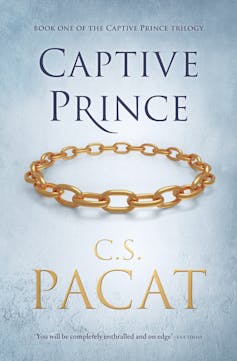
Sometimes these stories go spectacularly mainstream, as with C.S. Pacat’s The Captive Prince, a gay erotic fantasy about a prince who is given to the ruler of a neighbouring kingdom as a pleasure slave. Originally self-published, The Captive Prince started as a web serial that gathered 30,000 signed-up fans and spawned Tumblrs dedicated to fan fiction and speculation about where the series would go.
The book was rejected by major publishers, so Pacat self-published to Amazon and within 24 hours it had reached number 1 in LGBTQIA+ fiction. A New York agent approached Pacat and secured her a seven-figure publication deal with Penguin. The queer fantasy or paranormal romance has continued to thrive in Pacat’s wake.
In our interviews with romance authors, questions of diversity, inclusion, representation and inequity arose again and again. In representation and amplifying marginalised voices, romance has enormous potential to lead the way.
Read more: If the Romance Writers of America can implode over racism, no group is safe
5. Romance has gates that are kept
Romance fiction is more progressive than some stereotypes might suggest, but it is not free from exclusion or discrimination. The genre is influenced by its gatekeepers – human and digital.
One form of gatekeeping takes place through the same voluntary associations that nurture community. In late 2019, the board of the Romance Writers of America censured prominent writer of colour, Courtney Milan, suspending her from the organisation for a year and banning her from leadership positions for life.
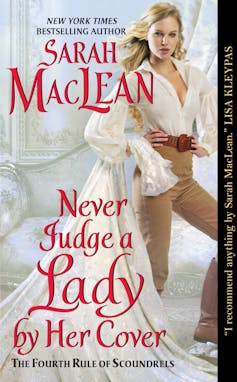
The decision was made following complaints by two white women, author Katherine Lynn Davis and publisher Suzan Tisdale, about statements Milan had made on Twitter, including calling a specific book a “fucking racist mess”.
This use of the organisation’s formal mechanisms to condemn a woman of colour and support white women was controversial, provoking widespread debate across social media and email lists.
Milan had long been an advocate for greater inclusion and diversity within Romance Writers of America and the romance genre. As the Guardian reported, the choice not to discipline anyone for “actually racist speech” made punishing someone for “calling something racist” seem like a particularly troubling double standard. “People saw it as an attempt to silence marginalised people,” observed Milan.
The board retracted its decision about Milan. It is difficult, however, to calculate the damage that may have been done to readers and writers of colour in the romance genre world. Conversely, the use of Twitter to extend debate and eventually correct the Romance Writers of America shows change happening, in real time.
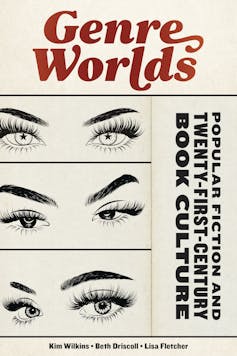
Another form of gatekeeping in romance fiction happens through the same digital platforms that put the genre at the forefront of industry change.
Safiya Umoja Noble’s book Algorithms of Oppression demonstrates how apparently neutral automated processes can work against women of colour — for example, the different results that come up from a Google search of “black girls” compared with “white girls.”
In the world of romance fiction, Claire Parnell’s research has shown the multiple ways in which the algorithms, moderation processes and site designs of Amazon and Wattpad work against writers of colour. For example, they make use of image-recognition systems that flag romance covers with dark-skinned models as “adult content” and remove them from search results. They can also override the author’s chosen metadata to move books into niche categories where fewer readers will find them, such as “African American romance” rather than the general “romance fiction”.
Concerted activism and attention is needed to work against this kind of digital discrimination, which risks replicating the discrimination in traditional publishing.
There is no simple way to account for the dynamics of contemporary romance fiction. It is inclusive and policed; it is public and intimate. Its industrial, social and textual dimensions are not static, but interact dynamically, incorporating the possibility of change. Only by understanding these interactions can we gain a complete picture of the work of popular fiction.
Contemporary romance fiction is formally tight, emotionally intense and digitally advanced. It’s where the heartbeat of change and action is in book culture.
Techyrack Website stock market day trading and youtube monetization and adsense Approval
Adsense Arbitrage website traffic Get Adsense Approval Google Adsense Earnings Traffic Arbitrage YouTube Monetization YouTube Monetization, Watchtime and Subscribers Ready Monetized Autoblog
from Kindle Publishing – My Blog https://www.techyrack.com/syndication/2022/10/06/friday-essay-romance-fiction-rewrites-the-rulebook-the-conversation-france/
via IFTTT

No comments:
Post a Comment